Lash Conversion and Calculation
One of the most important aspects of volume lashing is knowing how to do it safely. In addition to impeccable isolation skills, this means knowing how much extensions ‘weigh’ and what appropriate weights are for each client. In order to do that, you need to be able to calculate how many lashes of one diameter are equivalent to another.
Because eyelash extensions are so light and unable to be weighed by regular scales, we will measure the extension’s volumetric space (the amount of space the object takes up), instead of it’s actual weight. As long as you are comparing extensions that are made with the same material, measuring the space rather than the actual weight is just as effective to determine how many extensions equal the weight of another. Because the shape of a traditional eyelash extension is conical, we can do this fairly easily.
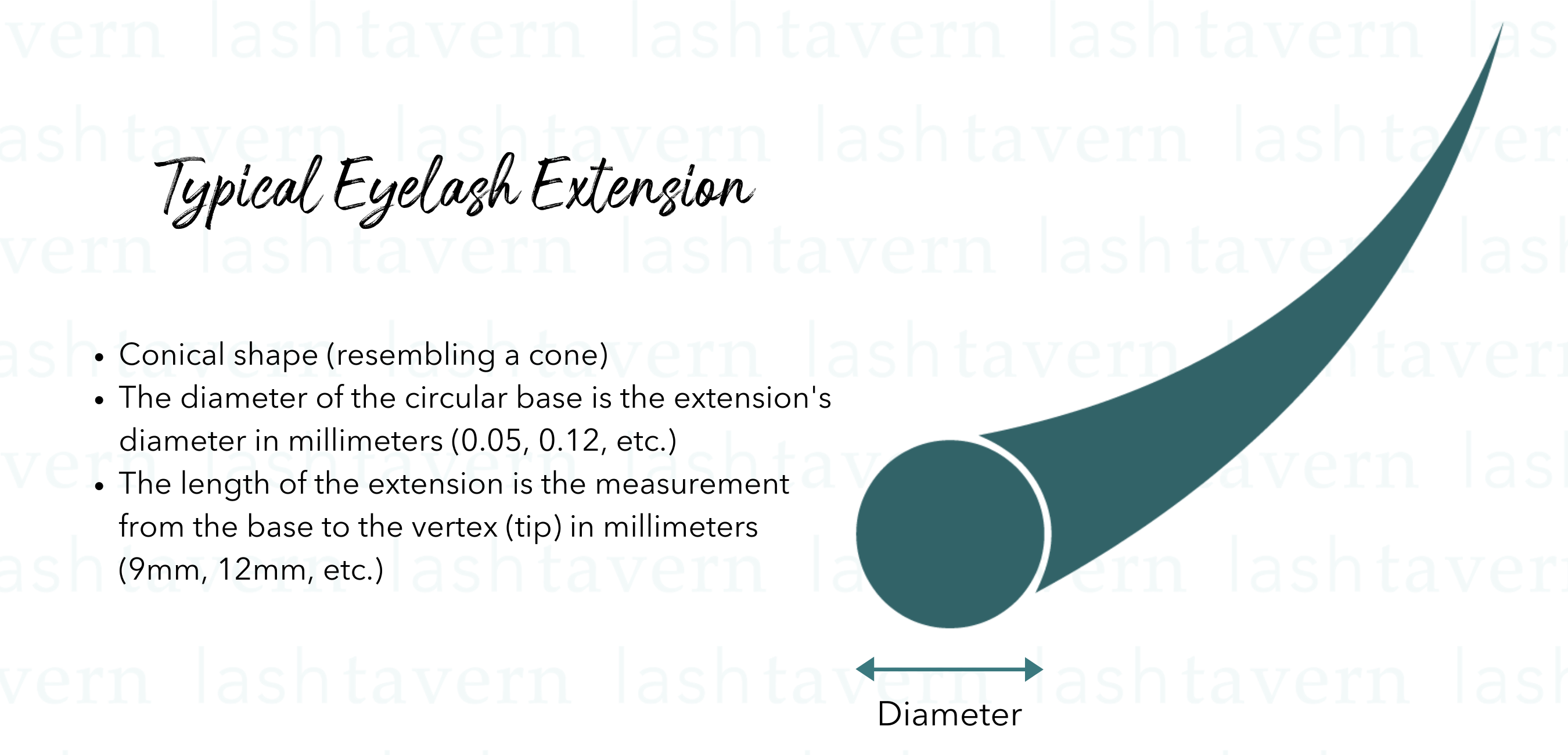

Calculating Lash Weights
A Visual Representation
Most technicians would assume that (2) 0.10 extensions would equal the same weight as (1) 0.20 extension. However, lash weight is not the same as diameter. Therefore, one 0.10 extension does not equal the same weight as half of one 0.20 extension. This is due to the cone shape of extensions that taper towards the tip. Diameter is only the measurement at the base of the extension, where the shape is circular.
Instead of adding the diameters together, we need to see how many of those thinner diameter lashes can fit in the same amount of ‘volumetric space’ as the larger extension. The images below explain visually how we do this. The black circles represent an extension with a 0.15 diameter, while the blue circles represent extensions with a 0.05 diameter. Imagine these circles as a cross section of the base of the extension.
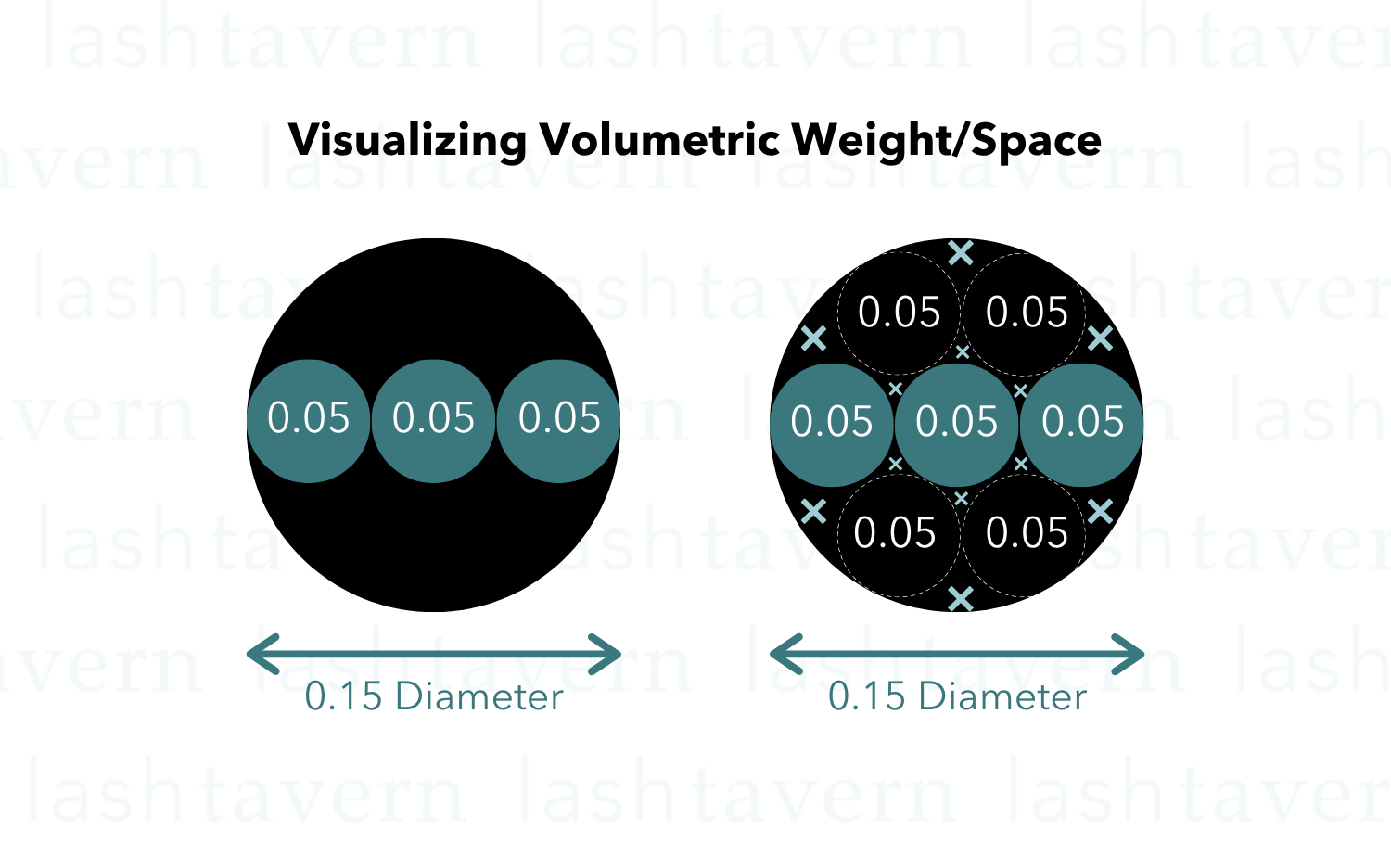
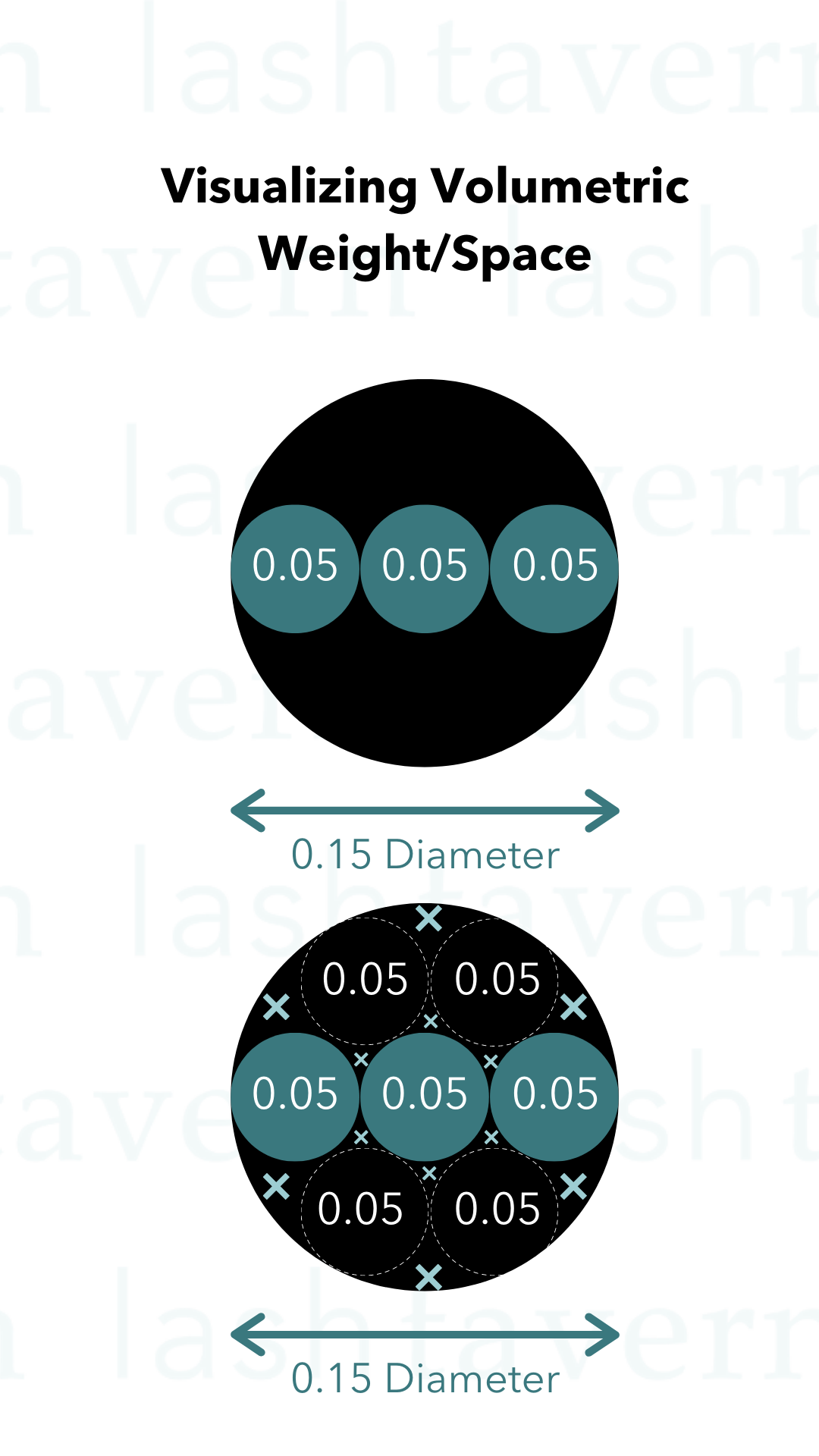
According to the images, you can see why three 0.05 extensions does not equal the same weight as one 0.15 extension. You can see how there is still plenty of room for additional 0.05 extensions in the same amount of space. The ‘x’s show even more unused space and collectively that space allows for another two 0.05 extensions, ultimately equalling nine 0.05 extensions in the same volumetric space as one 0.15.
Using a Mathematical Formula
The last image gives you a great visual representation of why we don’t add diameters together to convert lash weights. Now let’s use a mathematical approach to find exactly how many extensions are equal to another.
Because an extension in general terms, is cone shape, we can use the mathematical formula for the volume of a cone to find the volume of an extension.
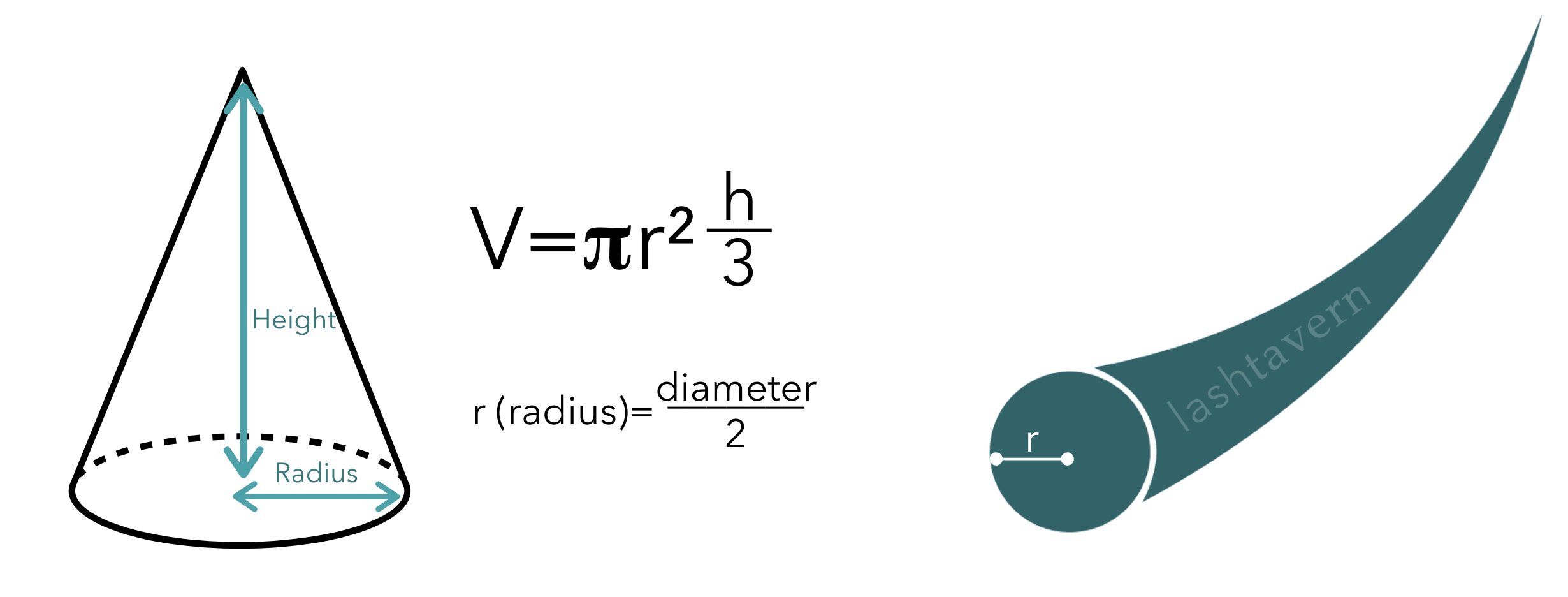
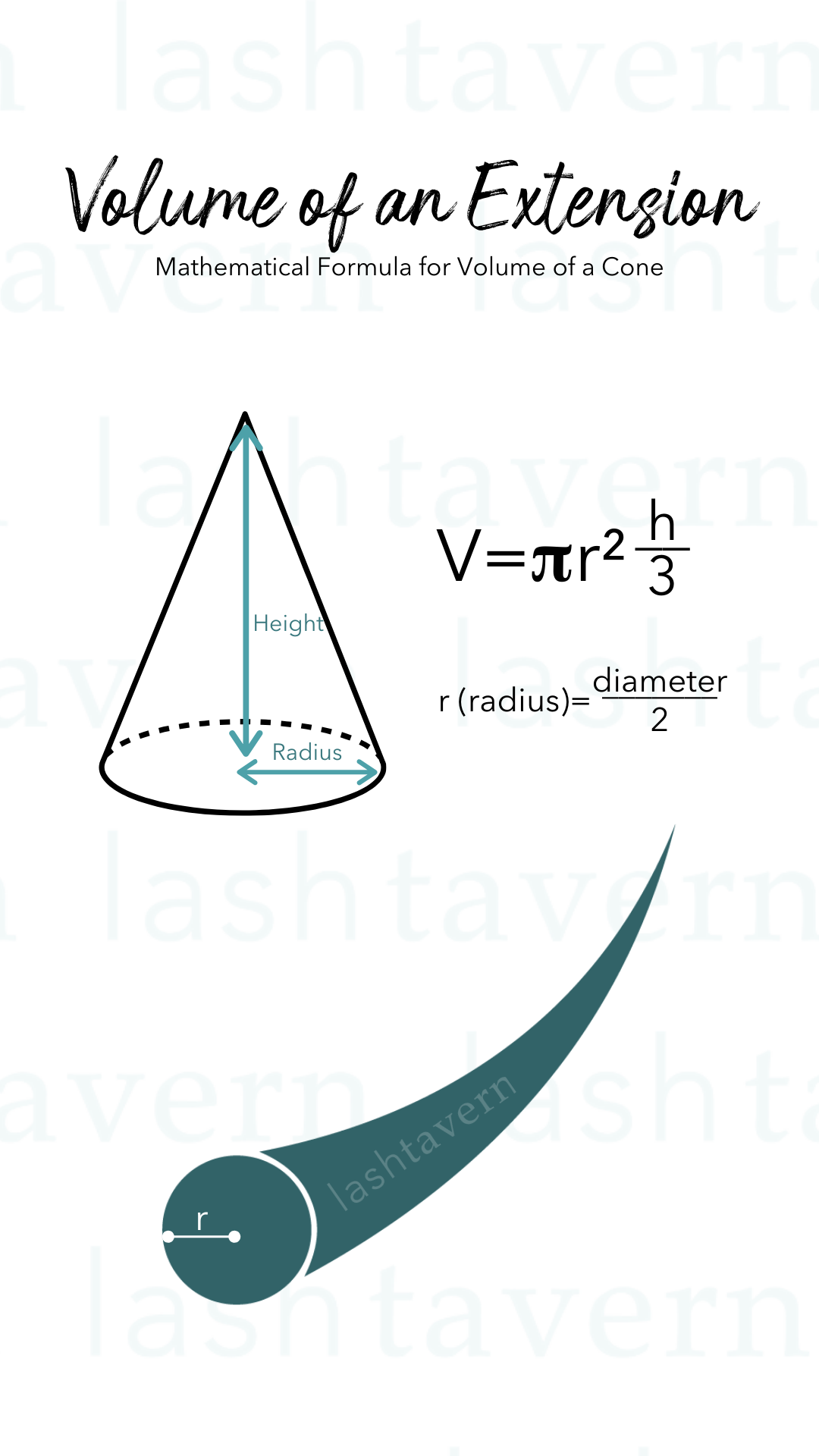
To calculate this formula, you will need to find the value for the radius. Your radius is half the length of your diameter (in mm). Your ‘height’ would be the length of your lash (in mm). So if looking for the volume of a 0.15 lash in 15mm length, the formula would look like this:
Volume= 3.14(0.075)² x 15, all divided by 3.
The following chart shows the results using this formula, based on a 15mm lash. The length of extension used for the formula doesn’t matter, as long as it is consistently used in your formulas and comparisons. We use it here because it allows for our results to be larger numbers that are easier to plug into our next step.

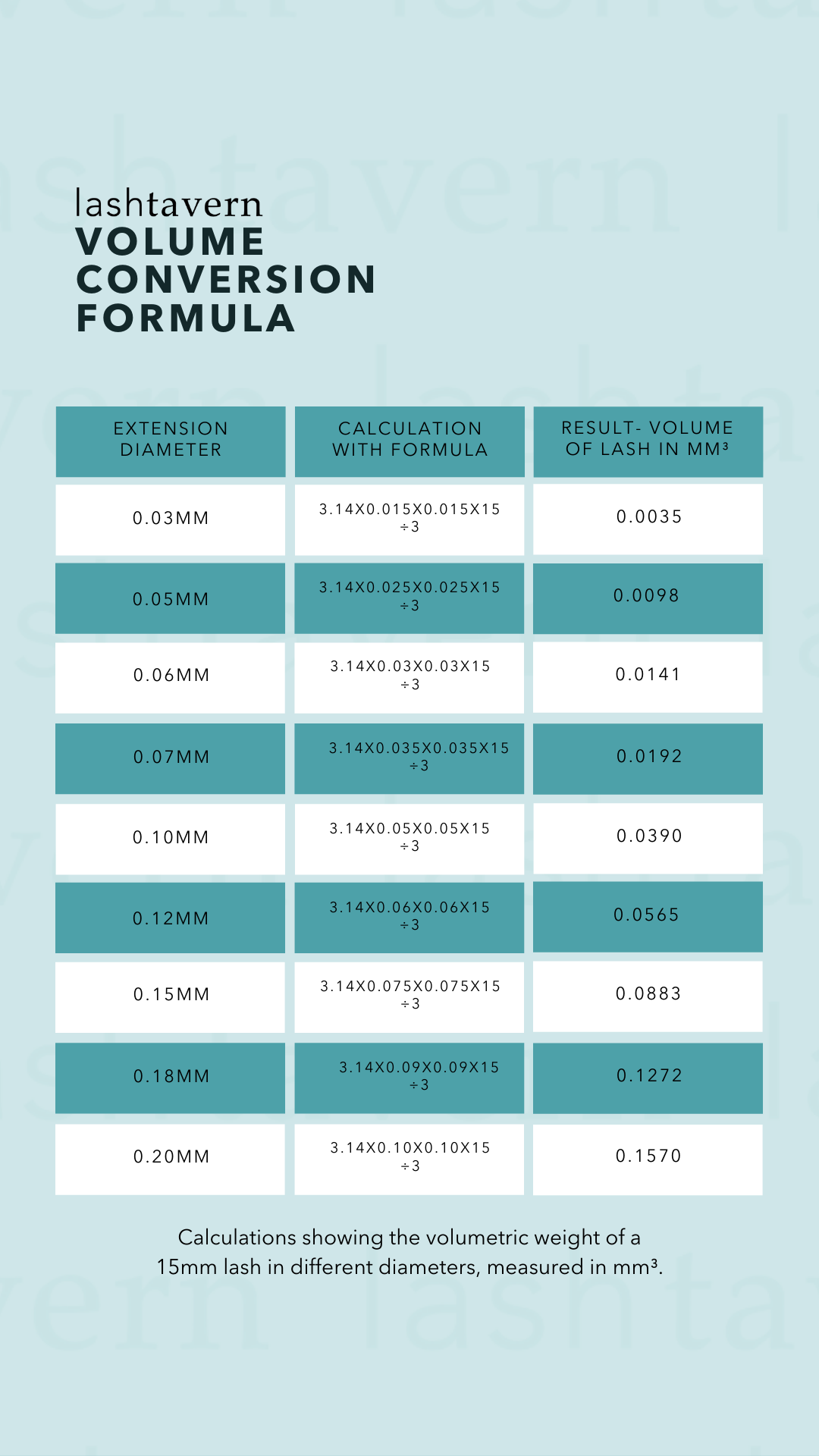
Now that we have found the volume (space an extension is taking up), we can use the results to establish how many lashes we can use in each fan to apply them safely. Most clients can wear a 0.15 safely, so we will use that diameter for this example.
A 0.15 lash has a volume of 0.0883mm³, which means our client can hold as many lashes safely that have the equivalent of this number. So, if we decided we wanted to use 0.05 extensions (volume of 0.0098mm³) on our client, we can simply divide the volumetric space of the 0.15 extension by the volumetric space of the 0.05 extension. Which looks like this:
0.0883 / 0.0098 = 9.0102
By this equation, we find that we can apply (9) 0.05 extensions to a lash that can healthily support a 0.15 extension. To avoid overloading the natural lash, this number is rounded down to the nearest whole number. This equation can be used for any lash diameter.
We have included the following cheat sheet for you to refer to for the maximum amount of extensions you should use in your fans. These results are based on a client’s ability to wear a 0.15 classic lash safely. The previous formula can be used to find the maximum fan size for clients that have stronger or weaker lashes.
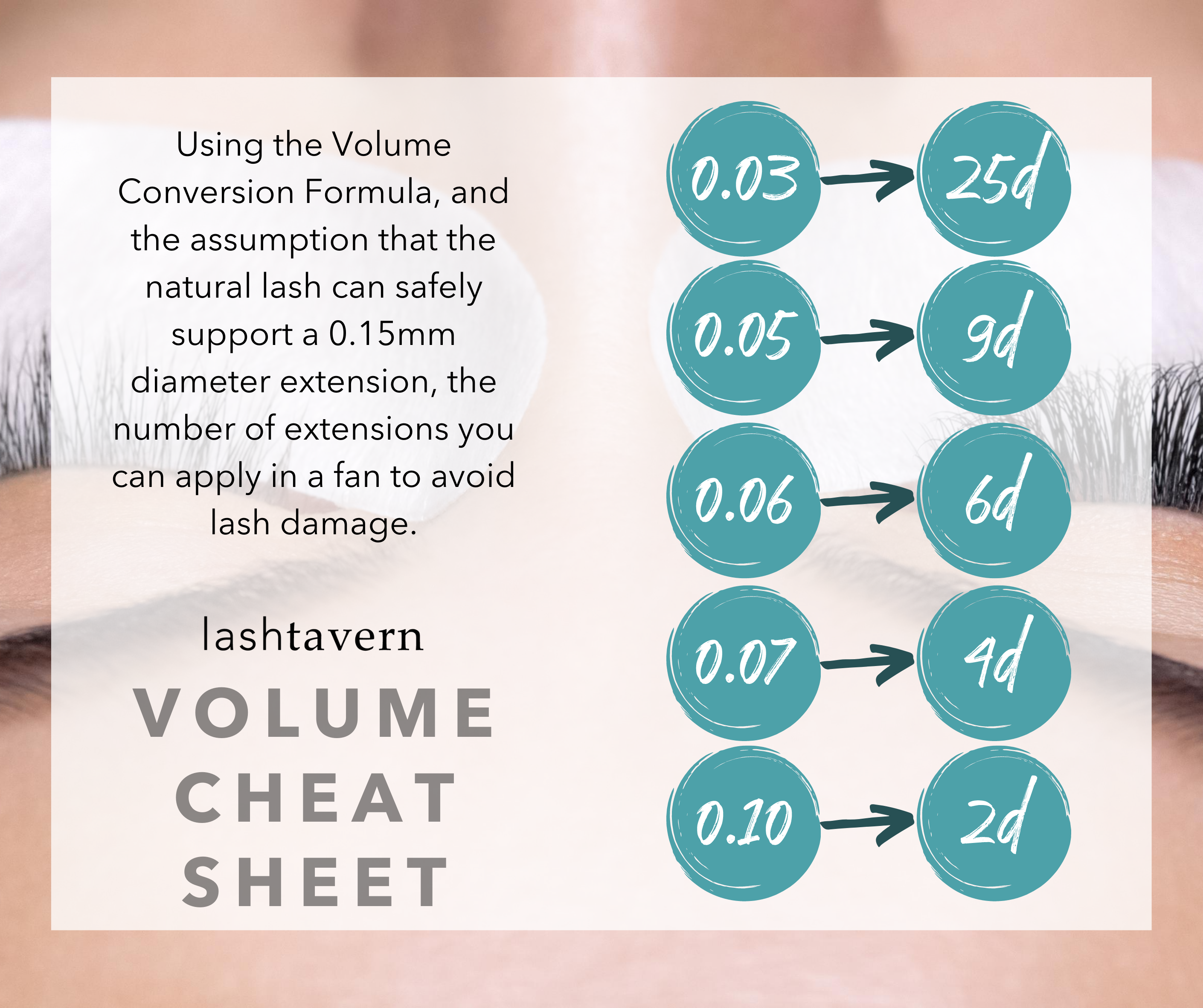
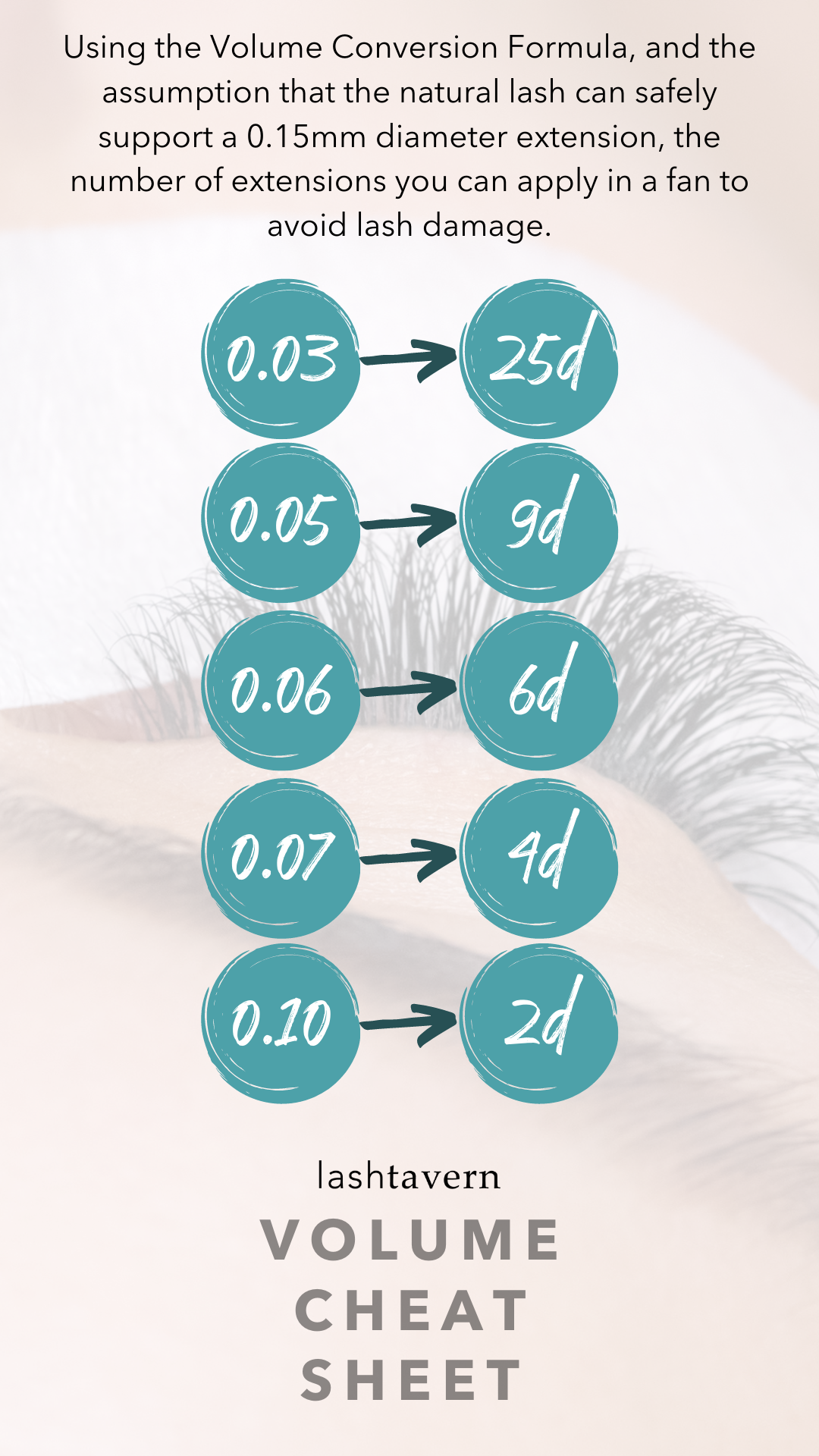
Use the results from the Volume Conversion Formula to calculate how many 0.03, 0.05, 0.07, and 0.10 extensions are equivalent to a 0.18 extension.
